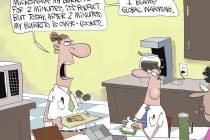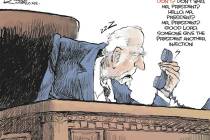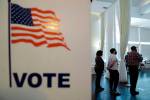‘A cautionary tale’
As President-elect Barack Obama and his mostly Democratic Congress roll up their sleeves and prepare to employ heavy-handed government mandates to force U.S. consumers to switch to automobiles less dependent on imported oil, it sure would be handy if there had been a large-scale experiment conducted to check and see if such requirements at least work when it comes to their main goal -- reducing gasoline use.
Oh wait. There was. And they didn't.
In 1992, just after the Persian Gulf War, Congress passed the Energy Policy Act, hoping to harness the government's buying power to spark a green vehicle revolution, The Washington Post reported this week. Federal agencies were (and still are) required to buy enough alternative-fuel vehicles to make up 75 percent of their light-duty fleets: cars, trucks and vans that weigh less than 8,500 pounds. The ultimate goal was to give automakers an incentive to produce more fuel-efficient cars.
But the program -- known as "EPAct" -- had a huge loophole: Agencies were required to buy alternative-fuel vehicles ... but were not required to actually run them on alternative fuel.
Because alternative-fuel use was not mandated, large numbers of vehicles that could run on various fuels -- propane, compressed natural gas and ethanol-based E85 -- ended up in places where none of those fuels were actually available.
The Post analysis showed that at least 2,341 flex-fuel vehicles were placed in seven states and Puerto Rico, which have no E85 stations.
Hawaii has the greatest share, with more than 1,000 flex-fuel vehicles purchased or leased by various agencies, mostly military.
The Navy alone has more than 670 flex-fuel vehicles on three Hawaiian islands. A great step forward in breaking our dependence on foreign oil? No. Not one of the sedans, sport-utility vehicles or trucks has ever operated on E85, because there isn't any.
No refineries produce ethanol on Hawaii, where emerald waves of corn are few and far between. Using tankers to ship the stuff there would render use of the corn liquor -- whose farmers and distillers already use more petroleum than the program saves -- even less environmentally "helpful."
"The federal government has invested billions of dollars over the past 16 years building a fleet of 112,000 alternative-fuel vehicles to serve as a model for a national movement away from fossil fuels," The Post reports.
Instead, more than 92 percent of the fuel used in the government's alternative-fuel fleet continues to be standard gasoline. In fact, the federal program has sometimes actually increased gasoline consumption and emission rates.
The Postal Service estimates its 37,000 newer alternative-fuel delivery vans, which can run on high-grade ethanol, actually consumed 1.5 million more gallons of gasoline last fiscal year than they would have, had "EPAct" not been in effect. That's because the "flex-fuel" vehicles which the agency had to buy in order to meet the federal mandates were available only in six- and eight-cylinder models -- not the four-cylinder, "plain gas" variety the postal service used to traditionally purchase.
"The EPAct program offers a cautionary tale as President-elect Barack Obama promises to kill dependence on foreign oil and revive the economy by retooling for the green revolution," The Post reports.
"This is an example of a law that has had a perversely different effect than what was originally intended," said Jim Kliesch, a senior engineer with the Union of Concerned Scientists, a Washington-based environmental nonprofit organization.
Gee. Has that ever happened before?























